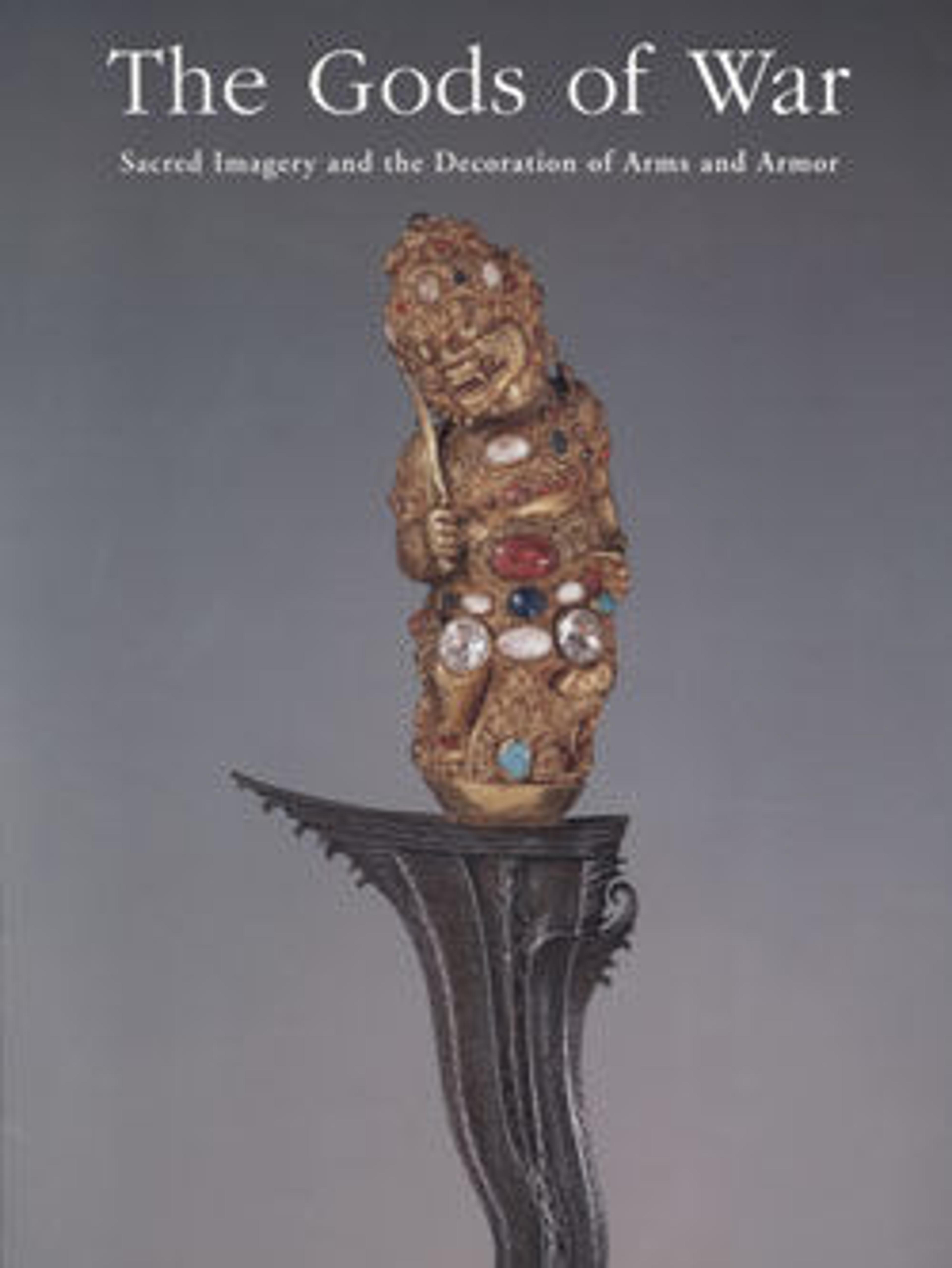Dirk with Sheath
In addition to functioning as essential military side arms, daggers were worn by all classes of society as a part of everyday dress in medieval and Renaissance Europe. They were used as tools, as eating utensils, and as a ready means of self-defense. Daggers were generally carried in a sheath at the belt and varied greatly in size. The amount and type of decoration displayed on a dagger depended entirely upon the taste and means of its owner. Few, however, exhibit images as elaborate and detailed as the Old Testament subjects that adorn the carved wood grip of this example. The old Testament was adapted by early Christians from the Tanakh, the most sacred teachings of Judaism, to provide the scriptural foundation for the advent of Jesus Christ as told in the New Testament. The events and characters of the New Testament are seen in the Christian tradition as the divinely ordained culmination and fulfillment of the Hebrew scriptures. Therefore, figures and scenes from both testaments often occur in the decoration of weapons such as this dagger.
This hilt depicts Adam and Eve, the first man and the first woman, who were created by God to inhabit the Garden of Eden. They are shown in one of the fundamental episodes of the Bible, generally referred to as the Fall of Man. The carver has chosen to show, in a tightly spiraling composition, the moment at which Adam and Eve, having lost their state of innocence, first perceive their nakedness and, with anguished expressions, cover themselves with fig leaves. Satan, in the form of a serpent, has tricked them into eating an apple from the tree of knowledge, against God's commannd. The serpent's head, with an apple in its mouth, can be seen emerging from the foliage above Adam's shoulder. The large fox at the base of the grip reinforces the theme of deception by representaing cunning and guile. In the Judeo-Christian traidition the disobedience of Adam and Eve constituted the original sin, for which they were expelled from the Garden and which caused all humanity thereafter to suffer disaffection from God. Jesus is referred to as the New Adam because of the belief that only through the sacrifice of his death on the cross was mankind redeemed from the guilt of the original sin and restored to God's grace.
This hilt depicts Adam and Eve, the first man and the first woman, who were created by God to inhabit the Garden of Eden. They are shown in one of the fundamental episodes of the Bible, generally referred to as the Fall of Man. The carver has chosen to show, in a tightly spiraling composition, the moment at which Adam and Eve, having lost their state of innocence, first perceive their nakedness and, with anguished expressions, cover themselves with fig leaves. Satan, in the form of a serpent, has tricked them into eating an apple from the tree of knowledge, against God's commannd. The serpent's head, with an apple in its mouth, can be seen emerging from the foliage above Adam's shoulder. The large fox at the base of the grip reinforces the theme of deception by representaing cunning and guile. In the Judeo-Christian traidition the disobedience of Adam and Eve constituted the original sin, for which they were expelled from the Garden and which caused all humanity thereafter to suffer disaffection from God. Jesus is referred to as the New Adam because of the belief that only through the sacrifice of his death on the cross was mankind redeemed from the guilt of the original sin and restored to God's grace.
Artwork Details
- Title:Dirk with Sheath
- Date:ca. 1650–1700
- Culture:French
- Medium:Steel, wood
- Dimensions:L. with sheath 11 7/16 in. (29.1 cm); L. without sheath 10 1/2 in. (26.7 cm); W. 1 in. (2.5 cm); Wt. 2.9 oz. (82.2 g); Wt. of sheath 0.7 oz. (19.8 g)
- Classification:Daggers
- Credit Line:Gift of Jean Jacques Reubell, in memory of his mother, Julia C. Coster, and of his wife, Adeline E. Post, both of New York City, 1926
- Object Number:26.145.236a, b
- Curatorial Department: Arms and Armor
More Artwork
Research Resources
The Met provides unparalleled resources for research and welcomes an international community of students and scholars. The Met's Open Access API is where creators and researchers can connect to the The Met collection. Open Access data and public domain images are available for unrestricted commercial and noncommercial use without permission or fee.
To request images under copyright and other restrictions, please use this Image Request form.
Feedback
We continue to research and examine historical and cultural context for objects in The Met collection. If you have comments or questions about this object record, please contact us using the form below. The Museum looks forward to receiving your comments.
